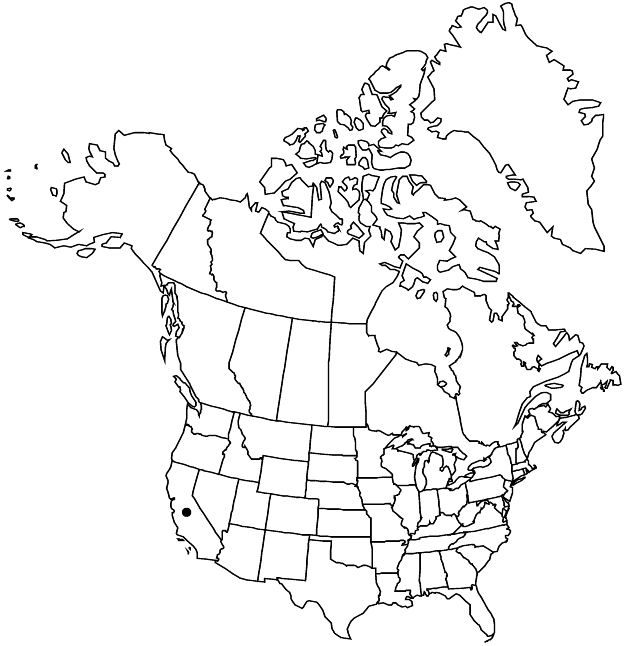Passiflora tarminiana
Novon 11: 9, figs. 1, 3, plate 1. 2001.
Stems terete, densely hairy. Leaves not pungent, densely soft-hairy abaxially, sparsely hairy adaxially; stipules subreniform, often leaflike, 4–7 × 2–3 mm, eglandular; petiole glandular, glands emergent protuberances; blade roughly symmetric, 5.5–16 (–28) × 7–16 (–29) cm, deeply 3-lobed, middle lobe as long as or longer than lateral lobes, margins serrate; abaxial fine veins prominently raised, abaxial nectaries absent. Floral bracts leaflike, 25–50 × 20–30 mm, margins entire, eglandular. Flowers: floral-tube elongate, 60–80 mm deep; sepals pink, 45–60 × 12–25 mm; petals pink, 40–54 × 15–20 mm; corona filament whorls 1, filaments tuberculate knobs, purple basally, white apically, 1–2 mm. Berries yellow to orange-yellow, oblong to ellipsoid-fusiform, 100–140 × 35–45 mm.
Phenology: Flowering Jun–Sep(–Dec).
Habitat: Pine or oak woodlands and woodland edges
Elevation: 0–100 m
Distribution

Introduced; Calif., South America (Colombia), South America (Ecuador), South America (Peru), South America (Venezuela)
Discussion
Passiflora tarminiana is sparingly naturalized in the eastern San Francisco Bay area (F. Hrusa et al. 2002) and southward along the coast to San Luis Obispo County, in areas of minimal summer drought.
This species was recently described, and is commonly confused with Passiflora mollissima (Kunth) L. H. Bailey [now usually recognized as P. tripartita var. mollissima (Knuth) Holm-Nielsen & P. Jørgensen]. Many reports of P. mollissima in agricultural, horticultural, and weed-science literature actually apply to P. tarminiana. An attractive plant with large, edible fruits (T. Ulmer and J. M. MacDougal 2004), it is an extremely aggressive weed in Hawaii (A. M. La Rosa 1984, as P. mollissima) and other areas where it has been introduced in the Old World tropics and subtropics. The species is unlikely to become a widespread weed in the continental United States because it cannot survive frost nor occasional desiccation.
A similar, closely related species, Passiflora mixta Linnaeus f., is a rare escape in San Francisco, California; it can be distinguished from P. tarminiana by its angular young stems, persistent stipules (deciduous in P. tarminiana), and a floral tube 80–110 mm deep, 1.6–2.6 times the sepal length (1.3–1.6 times in P. tarminiana).
Selected References
None.
Lower Taxa
"fine" is not a number.